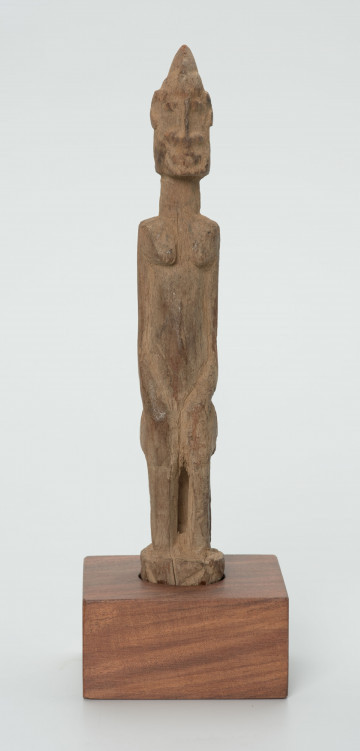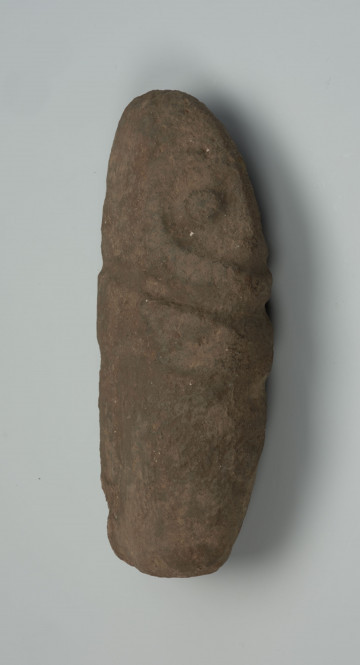
Figurine - ancestor
między 1901 — 1950
National Museum in Szczecin
Part of the collection: Collection of Dogonian art
The Dogon are people living in the south-central part of the Republic of Mali. Their social structure is very complex. One of the most interesting divisions observed in the Dogon country is the separation of two dichotomous groups: inne puru and inne omo. The applies only to circumcised men who are farmers. Membership of one of these groups is not passed on from father to son but is inherited with the niani (soul, incarnation). The division between the inne puru and inne omo affects many aspects of Dogon social and economic life. The two groups complement each other and alternate in fulfilling their duties to the whole community. The term inne puru is derived from the word puru meaning something unclean, dangerous, disorderly. Menstrual blood is also referred to by this term. The opposite term to puru is omo, meaning a state of order, lightness, perfection and balance of spiritual forces. Thus, inne puru is translated as unclean or dead, while inne omo is translated as pure or living. The inne puru men perform rituals associated with death, and are involved in such things as preparing the dead for burial, burials, making offerings, and building houses of seclusion for menstruating women called punulu. Olubaru and the leader of the secret Awa society are chosen from among them. Inne omo, on the other hand, are not allowed to engage in any ceremonies and activities related to death, not even hunting or sacrificing, but they perform many rituals to ensure the growth and fertility of the land (and indirectly of the people) and only a man belonging to the group is predisposed to apply for the post of Hogon.
Ewa Prądzyńska
The Dogon are people living in the south-central part of the Republic of Mali. Their social structure is very complex. One of the most interesting divisions observed in the Dogon country is the separation of two dichotomous groups: inne puru and inne omo. The applies only to circumcised men who are farmers. Membership of one of these groups is not passed on from father to son but is inherited with the niani (soul, incarnation). The division between the inne puru and inne omo affects many aspects of Dogon social and economic life. The two groups complement each other and alternate in fulfilling their duties to the whole community. The term inne puru is derived from the word puru meaning something unclean, dangerous, disorderly. Menstrual blood is also referred to by this term. The opposite term to puru is omo, meaning a state of order, lightness, perfection and balance of spiritual forces. Thus, inne puru is translated as unclean or dead, while inne omo is translated as pure or living. The inne puru men perform rituals associated with death, and are involved in such things as preparing the dead for burial, burials, making offerings, and building houses of seclusion for menstruating women called punulu. Olubaru and the leader of the secret Awa society are chosen from among them. Inne omo, on the other hand, are not allowed to engage in any ceremonies and activities related to death, not even hunting or sacrificing, but they perform many rituals to ensure the growth and fertility of the land (and indirectly of the people) and only a man belonging to the group is predisposed to apply for the post of Hogon.
Ewa Prądzyńska
Author / creator
Dimensions
cały obiekt: height: 25 cm, width: 5 cm
Object type
figure
Creation time / dating
Creation / finding place
Identification number
Location / status

między 1901 — 1950
National Museum in Szczecin

między 1951 — 2000
National Museum in Szczecin

między 1951 — 2000
National Museum in Szczecin
DISCOVER this TOPIC
Museum of King Jan III's Palace at Wilanów
DISCOVER this PATH
Educational path